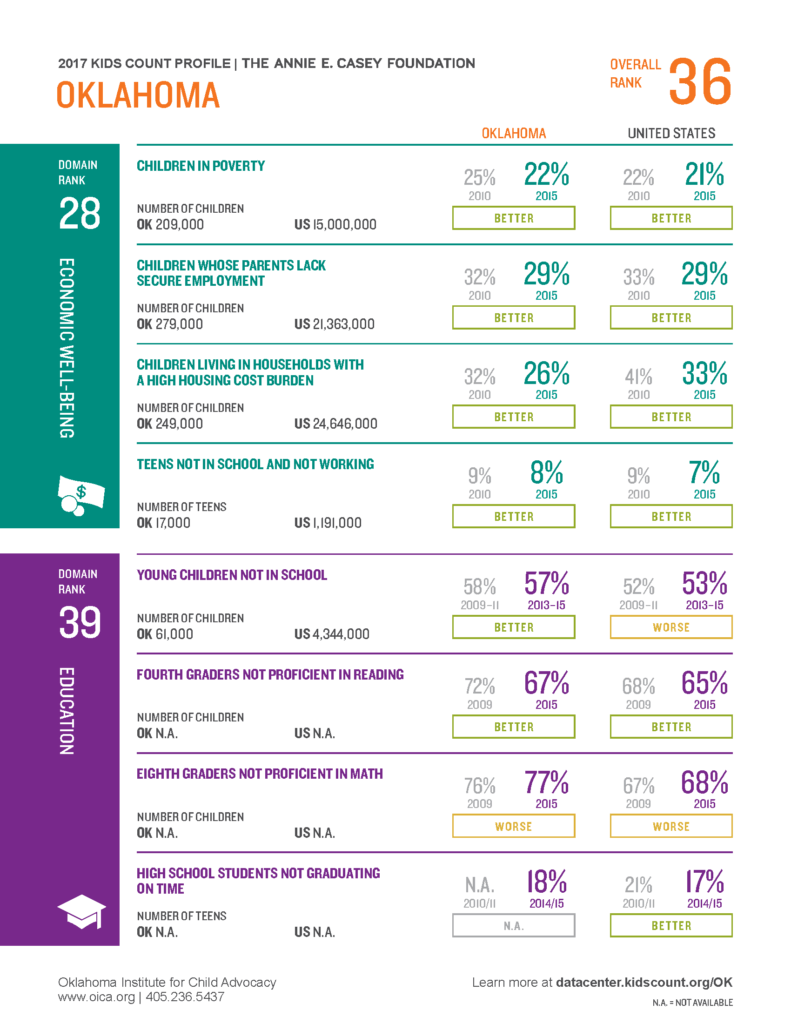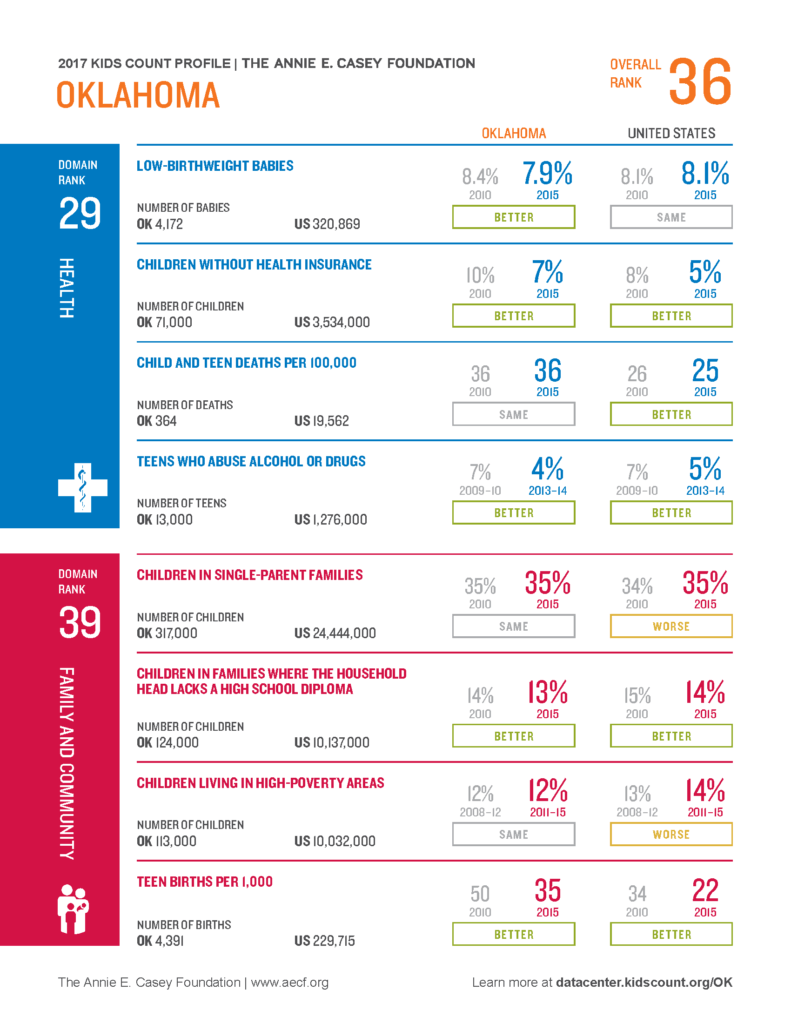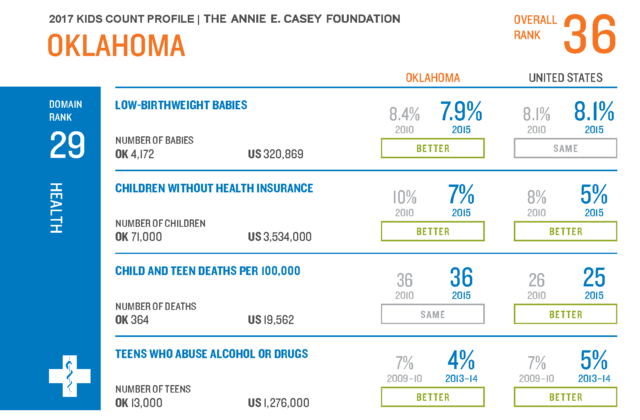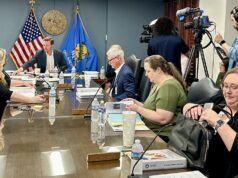
It could be argued that 2017 has been the year of adults acting like children. With an upcoming election year, it could get worse. That’s why we should pay attention to the results of the Oklahoma Institute for Child Advocacy’s Kids Count study and ask candidates, “What is your plan for improving the lives of Oklahoma children?”
During a Nov. 2 forum hosted by OICA, attendees were urged to “deputize” themselves and be “a little aggressive” to:
Create and drive a legislative agenda that addresses critical issues affecting children. This may include creation of a children’s cabinet, creation of a coordinated budget and making it “safe” to raise revenue to fund child related initiatives.
Under these directives, children’s advocates will come together to “provide child centric questions to the media.” They will seek to include children in the Oklahoma State Chamber of Commerce OK 2030 Initiative. To meet the chamber’s goals of improving “Quality of Life” and “Workforce and Talent Development,” we must create safe, secure and nurturing places to prepare kids for their adult lives.
I was especially impressed with the idea of recreating a coordinated budget for children’s issues. OICA CEO Joe Dorman said the Legislature’s first effort to devise such a comprehensive budget briefly showed promise, but it collapsed due to a lack of resources. So, we must face the hard truth that Sunbeam Services CEO Jim Priest noted: We must set worthy priorities. When doing so, however, we should “first check our checkbooks.”
Subsequent posts will draw on evidence from the research funded by the Annie E. Casey Foundation and other social science that OICA analyzed. This first review of their findings is very consistent with studies on national and Oklahoma patterns.
Economic well-being and education

There is also solid evidence that the best early education efforts, like those in Tulsa, are making lives better for poor children and families, and that those programs could be laying the foundation for future growth, which can be scaled up.
Oklahoma’s ranking in economic well-being peaked at 25th in the nation in 2013 but hasn’t improved since then. The 2017 Kids Count inventory ranks Oklahoma 28th in economic well-being.
Health, family and community metrics

Early education makes a difference
Oklahoma has been a national leader in early childhood education by expanding access to pre-K programs statewide. As the Kids Count profile shows, “budget cuts to funding and teacher salaries have put this legacy in danger.” That may help explain why we’ve made progress with 4-year-olds, even though 82 percent of Oklahoma’s 3-year-old children were not enrolled in any preschool program. Although it can’t be proven definitively, I suspect that explains a pattern revealed in the nation’s most reliable education metrics.
Fourth-graders setting the curve
Nationally, after decades of steady gains, progress in the reliable NAEP scores has slowed or even halted completely. On the average, Oklahoma has done better than most of the nation during the last couple of years, but the improvements are largely due to progress made by fourth-graders. From 2009 to 2015, Oklahoma’s proficiency rates in fourth-grade reading increased by three points.
Once students spend more time in our underfunded public schools, however, student performance drops. In 2009, 76 percent of Oklahoma eighth-graders were not proficient in math; that was nine points worse than the national average. As is true for the nation as a whole, the proficiency rate has worsened by one point since that time.
Children’s services deserve collaborative effort
Oklahoma needs to break down the silos between our underfunded-but-dedicated early education, public school, public health, mental health and social service providers. We need coordinated planning and budgeting of children services. The directives laid out for citizens to press children’s issues to legislators could lay the foundation for reversing our failures and building on our successes.





















